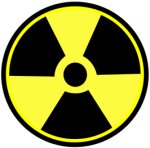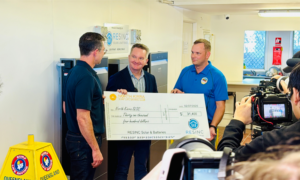Derek Abbott, Professor of Electrical and Electronic Engineering at the University of Adelaide, has arrived at the conclusion that nuclear power cannot be scaled to the degree it can supply the world’s energy needs and more attention needs to turn to renewable sources.
In an analysis to appear in a future issue of the Proceedings of the IEEE, Professor Abbot states around 15,000 nuclear reactors would be needed to supply the world’s current electricity needs, which is approximately 15 terawatts (TW). Currently, there are 440 commercial nuclear reactors around the world.
In an interview with PhysOrg.com, the professor stated, "The dream of a utopia where the world is powered off fission or fusion reactors is simply unattainable. Even a supply of as little as 1 TW stretches resources considerably."
A nuclear power plant requires around 20.5 square kilometers to host the station, the accompanying exclusion zone, enrichment plant and supporting infrastructure. Given a reactor’s various requirements, finding 15,000 suitable locations on Earth would be extremely difficult..
With the projected lifespan of a nuclear power station being 40-60 years, one station would need to be built and another decommissioned somewhere in the world every day says the professor – and as it takes 6-12 years to build a facility and up to 2 decades to decommission; the rate of replacement is unrealistic.
Professor Abbott says at the current rate of uranium consumption, the world supply of viable uranium would last for 80 years, but with 15,000 reactors online, it would be depleted within just 5 years.
Nuclear accidents would also become more commonplace – based on historical accidents, a world with 15,000 nuclear reactors would see a major accident somewhere every month.
While on the topic of nuclear accidents, the latest news from the Fukushima nuclear crisis remains unsettling, with the Tokyo Electric Power company announcing it will pump 4,000 tonnes of highly contaminated water from No. 3 reactor today. Fears are growing nuclear fuel rods have melted in the No. 2 and 3 reactors. A meltdown has already been confirmed in the No. 1 reactor.
The professor also lists a number of other points of why a nuclear future is unattainable and undesirable – including the thorny issue of nuclear waste that we still haven’t properly addressed, possible proliferation of nuclear weapons and the need for rare metals in construction for reactors outstripping supply. Whether by fusion or fission, nuclear energy is increasingly looking to be unviable and learning that lesson has come at a huge cost.
"Every dollar that goes into nuclear power is dollar that has been diverted from assisting the rapid uptake of a safe and scalable solution such as solar thermal or wind power," said Professor Abbott.












































